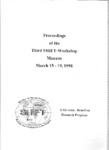Por favor, use este identificador para citar o enlazar este ítem:
http://www.alice.cnptia.embrapa.br/alice/handle/doc/668384Registro completo de metadatos
| Campo DC | Valor | Lengua/Idioma |
|---|---|---|
| dc.contributor.author | REISDORFF, C. | pt_BR |
| dc.contributor.author | LIEBEREI, R. | pt_BR |
| dc.contributor.author | GASPAROTTO, L. | pt_BR |
| dc.contributor.author | ARAUJO, R. C. | pt_BR |
| dc.contributor.author | MORAES, C. R. A. | pt_BR |
| dc.date.accessioned | 2014-12-12T08:17:00Z | - |
| dc.date.available | 2014-12-12T08:17:00Z | - |
| dc.date.created | 1999-09-29 | pt_BR |
| dc.date.issued | 1998 | pt_BR |
| dc.identifier.citation | In: SHIFT-WORKSHOP, 3., 1998, Manaus. Proceedings... Bonn: BMBF, 1998. | pt_BR |
| dc.identifier.uri | http://www.alice.cnptia.embrapa.br/alice/handle/doc/668384 | pt_BR |
| dc.description | The development of 750 cupuacu plants has been monitored after 3½ and 4½ years of growt in three different mixed cultivation systems and one monoculture. It has been found that the plant development vary significantly between the planting systems, the monoculture providing the worst conditions for the rapid maturation of cupuacu plants. Additionally it could be ascertained, that the development of cupuacu plants is significantly affected by distance to the adjacent primary or secondary forest. The strength of this influence lies in the range of the tendency obtained by different levels of fertilization (30% and 100% of recommeded dose). Other tested parameters (inoculation with VA-mycorrhiza fungi, topography in terms of slope and altitude) are not correlated with the development of cupuacu plants, excepting an evident edaphic influence, which becomes perceptible between the three western repetition blocks of the experiment and the two eastern blocks. Possible factors leading to the observed variability of plant development are discussed. | pt_BR |
| dc.language.iso | eng | eng |
| dc.rights | openAccess | eng |
| dc.subject | Agrofloresta | pt_BR |
| dc.subject | Brasil | pt_BR |
| dc.subject | Amazonas | pt_BR |
| dc.subject | Manaus | pt_BR |
| dc.subject | Growth | pt_BR |
| dc.subject | Fertilizers application | pt_BR |
| dc.title | The development of cupuacu plants (Theobroma grandiflorum Willd. ex Spreng. Schum) in different mixed cultivation systems and the effect of topograph features. | pt_BR |
| dc.type | Artigo em anais e proceedings | pt_BR |
| dc.date.updated | 2018-08-13T11:11:11Z | pt_BR |
| dc.subject.thesagro | Adubação | pt_BR |
| dc.subject.thesagro | Crescimento | pt_BR |
| dc.subject.thesagro | Cultivo Multiplo | pt_BR |
| dc.subject.thesagro | Cupuaçu | pt_BR |
| dc.subject.thesagro | Fertilizante | pt_BR |
| dc.subject.thesagro | Micorriza Vesicular Arbuscular | pt_BR |
| dc.subject.thesagro | Theobroma Grandiflorum | pt_BR |
| dc.subject.nalthesaurus | agroforestry | pt_BR |
| dc.subject.nalthesaurus | multiple cropping | pt_BR |
| dc.subject.nalthesaurus | vesicular arbuscular mycorrhizae | pt_BR |
| dc.format.extent2 | p. 329-339. | pt_BR |
| riaa.ainfo.id | 668384 | pt_BR |
| riaa.ainfo.lastupdate | 2018-08-13 -03:00:00 | pt_BR |
| dc.contributor.institution | University of Hamburg | pt_BR |
| dc.contributor.institution | Embrapa Amazonia Ocidental. | pt_BR |
| dc.contributor.institution | LUADIR GASPAROTTO, CPAA. | pt_BR |
| Aparece en las colecciones: | Artigo em anais de congresso (CPAA)  | |
Ficheros en este ítem:
| Fichero | Descripción | Tamaño | Formato | |
|---|---|---|---|---|
| Shift329.pdf | 9,86 MB | Adobe PDF |  Visualizar/Abrir |









